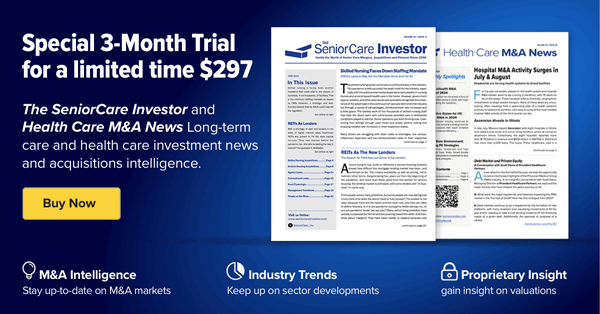In the evolving world of hospice care, private equity firms and publicly traded companies have made their mark, according to a recent study published in JAMA Network Open.
The JAMA study looked at 1,967 U.S. hospice agencies, of which 158 were acquired by private equity firms and 250 were acquired by publicly traded companies. The data revealed a significant shift in the patient demographics and care approaches at hospice agencies acquired by private equity firms and publicly traded companies. This transformation seems geared towards maximizing profitability.
According to the JAMA study, private equity-owned agencies saw a nearly 6% surge in patients with dementia post-acquisition. Publicly traded companies recorded an even more substantial increase, at 13.5%.
Both private equity-owned and publicly traded hospice agencies have increased their provision of home-based care, by 3.4% and 5.3%, respectively, compared to independently operated for-profit hospices. This strategic shift likely capitalizes on reimbursement structures favoring longer stays for lower-acuity patients and those in nursing homes or assisted living facilities.
The hospice sector has undergone a significant transformation over the past thirty years, with for-profit entities, including private equity and publicly traded companies, now comprising nearly two-thirds of all hospice agencies. However, concerns have been raised about the quality of care in these for-profit settings compared to nonprofit counterparts.
Currently, about 16% of U.S. hospice providers are owned by private equity firms or publicly traded companies, according to the JAMA study, which used Irving Levin Associates data as a source. So far, there have been 65 Home Health & Hospice (HH&H) transactions, with seven in the home hospice and palliative care subsector. Two of the hospice transactions involved private equity firms and/or their portfolio companies as the acquirer, and one involved a publicly traded acquirer.
By this time last year (between January 1, 2022, and September 27, 2022), there were 88 HH&H deals and 17 hospice and palliative care deals announced. Of those hospice deals, 11 (65%) involved private equity acquirers and/or their portfolio companies, and one (6%) acquirer was publicly traded.
The hospice and palliative care subsector seem to have more interest from private equity acquirers and/or their portfolio companies than other subsectors in the space. However, publicly traded companies seem less interested in the space, according to data captured in the LevinPro HC database. For home health, the most active HH&H subsector, private equity acquires and/or their portfolio companies made up 37% of acquirers during 2022, while publicly traded acquirers made up 20% of all acquirers in the subsector. In 2023, as of September 27, the data got even more spread out, making up 47% and 12.5%, respectively. The strategy of these companies typically involves acquiring well-managed agencies and then consolidating smaller hospices to expand market reach.
While the JAMA study offers valuable insights into the evolving hospice landscape, it underscores the need for further research to explore the impact of these acquisitions on care quality and patient outcomes over time. As private equity investments in healthcare continue to rise, the effects on hospice care must be closely monitored.


